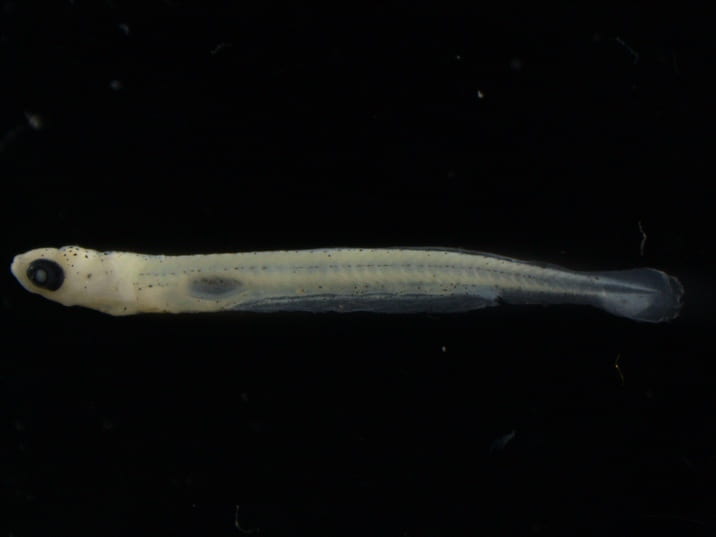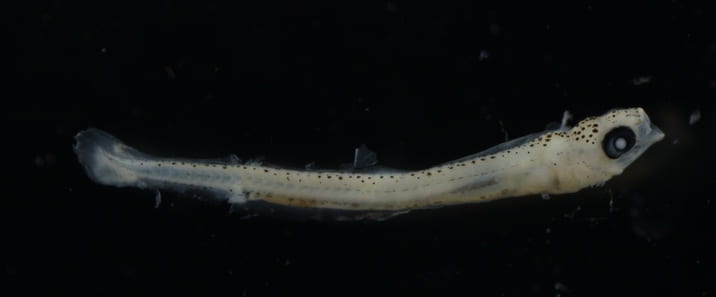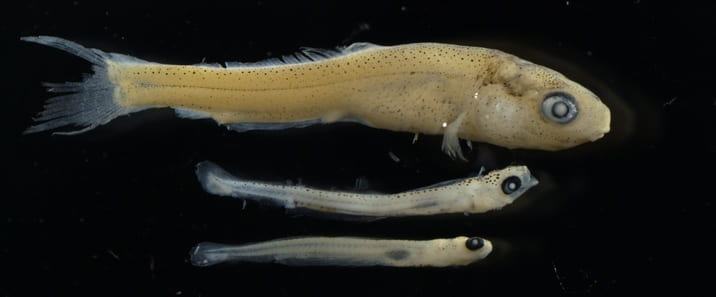Key Characteristics:
- Anal opening very far back, more than in Cyprinidae.
- A line of pigment along the top of the fish, and a thinner one along lateral line.
- Sleek “minnowy” look
- As they grow, mouth will look rounder and you will begin to see downturned sucker begin to form.
- In Lake Michigan the more prevalent Catostomidae are white suckers, but they are very tricky to key to species.
- Fins remain undefined and close to the body for most of larval stages.

Larval Quillback. United States Fish Wildlife Service. Marian Shaffer. 2017.

Larval Quillback. United States Fish Wildlife Service. Marian Shaffer. 2017.

Larval Quillback. United States Fish Wildlife Service. Marian Shaffer. 2017.

Different Larval Stages of Quillback. United States Fish Wildlife Service. Marian Shaffer. 2017.
- Body not elongated, eel-shaped, round in transverse section, uniformly pigmented (1B)
- Chin barbels absent (3B)
- Snout short, its length usually less than 10% TL; median fins otherwise (5B)
- Median fins or finfolds showing distinct separation (7B)
- No adipose fin, or demarcation of one, in finfold (10B)
- Preanal myomeres greater than or equal to postanal myomeres (14A)
- Preanal myomeres significantly greater than postanal myomeres (difference greater than five myomeres) (15B)
- Postanal myomeres usually less than or equal to 10 (26A)
- Preanal length 59 – 73% TL, ratio of preanal to postanal myomeres less than or equal to 5.0 (27B)
- Catostomidae – suckers
Adult History
- Physical Description
- Mouth lacks barbels, longest dorsal ray (similar to base), lips form an acute angle, lack nipple at the tip of the mouth, green/brown on back while belly is white, 36-40 cycloid lateral line scales, single dorsal fin (no spines, but 22-30 rays), anal fin (7-8 rays), and hole on roof of skull between the eyes
- Spawning Habitat
- Shallow water along the shores near aquatic vegetation
- Lakes & streams
- Shallow water along the shores near aquatic vegetation
- Spawning Substrate
- Eggs are deposited over mud, organic matter, sand, or gravel
- Spawning Behavior
- Polygynandry Behavior
- Sometimes migrate upstream or to their original spawning areas
- Offspring achieve independence after hatching
- No parental involvement
- Eggs are not guarded by their parents
- Time of Year
- April – June in Great Lake Basin
- Spawning typically takes place at water temperatures of 50 – 70°F
- Extreme temperature recorded at 80°F
- Diet
- Bottom Feeders/Omnivore
- Insects, mollusks, aquatic crustaceans, algae, and plant matter

